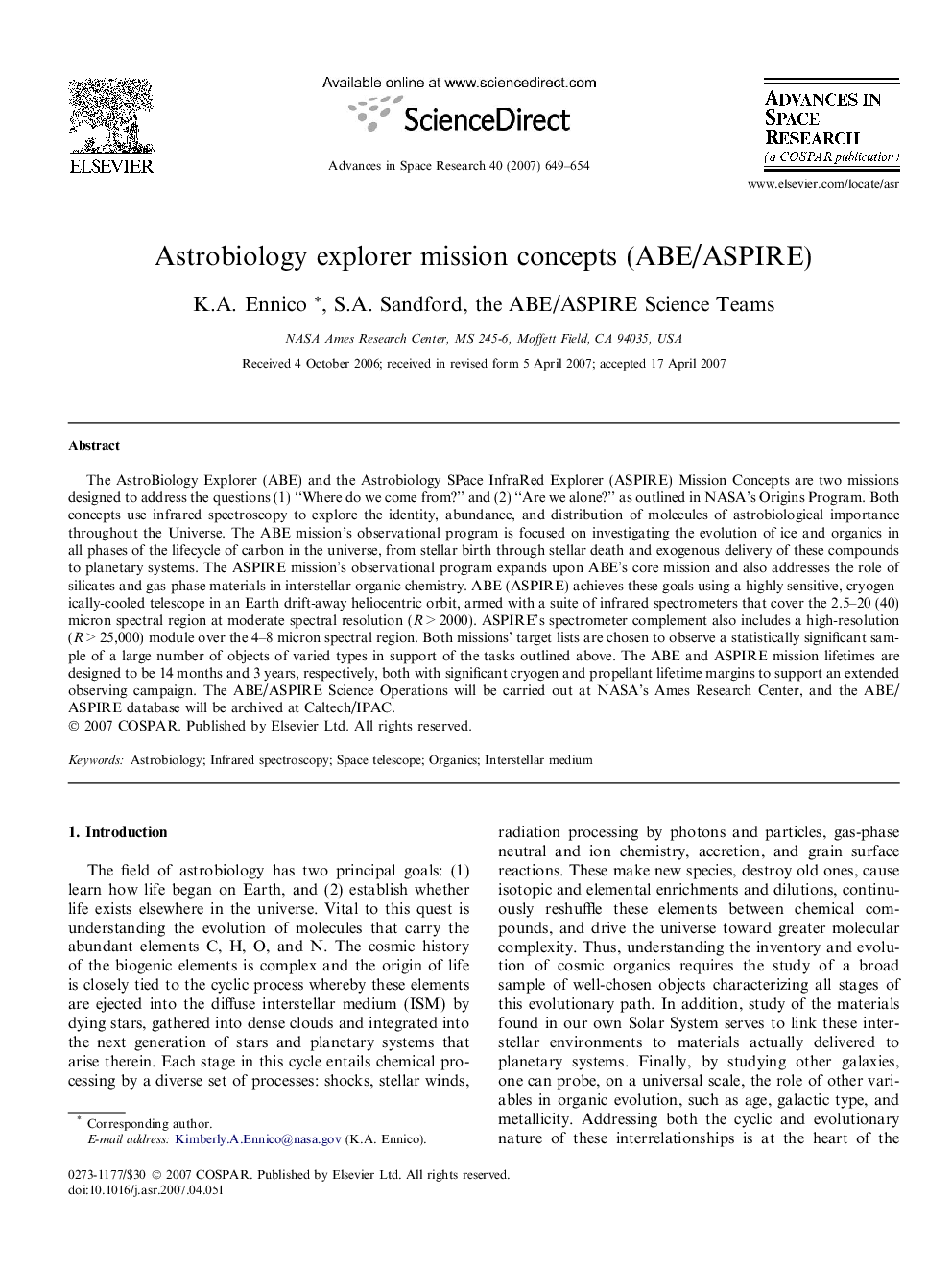| Article ID | Journal | Published Year | Pages | File Type |
|---|---|---|---|---|
| 1768735 | Advances in Space Research | 2007 | 6 Pages |
Abstract
The AstroBiology Explorer (ABE) and the Astrobiology SPace InfraRed Explorer (ASPIRE) Mission Concepts are two missions designed to address the questions (1) “Where do we come from?” and (2) “Are we alone?” as outlined in NASA's Origins Program. Both concepts use infrared spectroscopy to explore the identity, abundance, and distribution of molecules of astrobiological importance throughout the Universe. The ABE mission's observational program is focused on investigating the evolution of ice and organics in all phases of the lifecycle of carbon in the universe, from stellar birth through stellar death and exogenous delivery of these compounds to planetary systems. The ASPIRE mission's observational program expands upon ABE's core mission and also addresses the role of silicates and gas-phase materials in interstellar organic chemistry. ABE (ASPIRE) achieves these goals using a highly sensitive, cryogenically-cooled telescope in an Earth drift-away heliocentric orbit, armed with a suite of infrared spectrometers that cover the 2.5-20 (40) micron spectral region at moderate spectral resolution (RÂ >Â 2000). ASPIRE's spectrometer complement also includes a high-resolution (RÂ >Â 25,000) module over the 4-8 micron spectral region. Both missions' target lists are chosen to observe a statistically significant sample of a large number of objects of varied types in support of the tasks outlined above. The ABE and ASPIRE mission lifetimes are designed to be 14 months and 3 years, respectively, both with significant cryogen and propellant lifetime margins to support an extended observing campaign. The ABE/ASPIRE Science Operations will be carried out at NASA's Ames Research Center, and the ABE/ASPIRE database will be archived at Caltech/IPAC.
Related Topics
Physical Sciences and Engineering
Earth and Planetary Sciences
Space and Planetary Science
Authors
K.A. Ennico, S.A. Sandford, the ABE/ASPIRE Science Teams the ABE/ASPIRE Science Teams,
